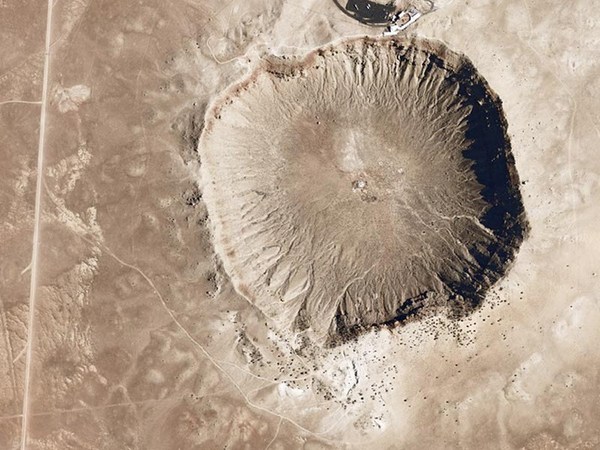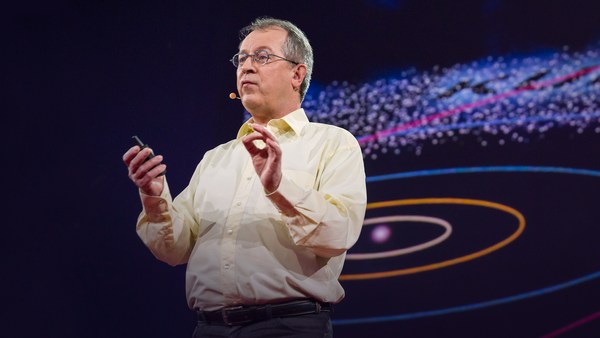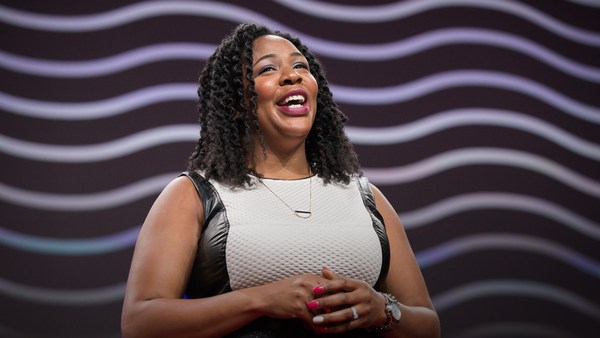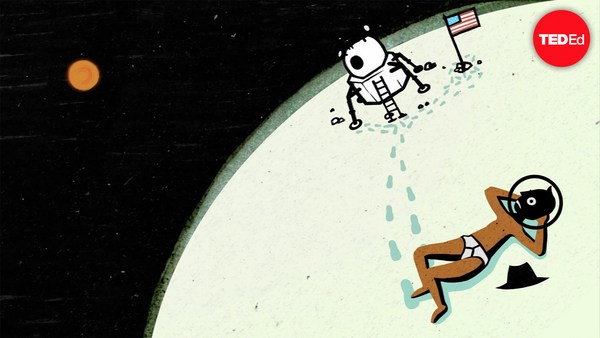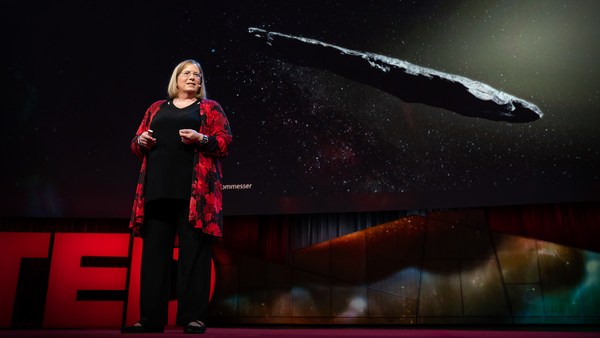I am holding something remarkably old. It is older than any human artifact, older than life on Earth, older than the continents and the oceans between them. This was formed over four billion years ago in the earliest days of the solar system while the planets were still forming. This rusty lump of nickel and iron may not appear special, but when it is cut open ... you can see that it is different from earthly metals. This pattern reveals metallic crystals that can only form out in space where molten metal can cool extremely slowly, a few degrees every million years. This was once part of a much larger object, one of millions left over after the planets formed. We call these objects asteroids.
Asteroids are our oldest and most numerous cosmic neighbors. This graphic shows near-Earth asteroids orbiting around the Sun, shown in yellow, and swinging close to the Earth's orbit, shown in blue. The sizes of the Earth, Sun and asteroids have been greatly exaggerated so you can see them clearly. Teams of scientists across the globe are searching for these objects, discovering new ones every day, steadily mapping near-Earth space. Much of this work is funded by NASA. I think of the search for these asteroids as a giant public works project, but instead of building a highway, we're charting outer space, building an archive that will last for generations.
These are the 1,556 near-Earth asteroids discovered just last year. And these are all of the known near-Earth asteroids, which at last count was 13,733. Each one has been imaged, cataloged and had its path around the Sun determined. Although it varies from asteroid to asteroid, the paths of most asteroids can be predicted for dozens of years. And the paths of some asteroids can be predicted with incredible precision. For example, scientists at the Jet Propulsion Laboratory predicted where the asteroid Toutatis was going to be four years in advance to within 30 kilometers. In those four years, Toutatis traveled 8.5 billion kilometers. That's a fractional precision of 0.000000004.
(Laughter)
Now, the reason I have this beautiful asteroid fragment is because, like all neighbors, asteroids sometimes drop by unexpectedly.
(Laughter)
Three years ago today, a small asteroid exploded over the city of Chelyabinsk, Russia. That object was about 19 meters across, or about as big as a convenience store. Objects of this size hit the Earth every 50 years or so.
66 million years ago, a much larger object hit the Earth, causing a massive extinction. 75 percent of plant and animal species were lost, including, sadly, the dinosaurs. That object was about 10 kilometers across, and 10 kilometers is roughly the cruising altitude of a 747 jet. So the next time you're in an airplane, snag a window seat, look out and imagine a rock so enormous that resting on the ground, it just grazes your wingtip. It's so wide that it takes your plane one full minute to fly past it. That's the size of the asteroid that hit the Earth.
It has only been within my lifetime that asteroids have been considered a credible threat to our planet. And since then, there's been a focused effort underway to discover and catalog these objects. I am lucky enough to be part of this effort. I'm part of a team of scientists that use NASA's NEOWISE telescope. Now, NEOWISE was not designed to find asteroids. It was designed to orbit the earth and look far beyond our solar system to seek out the coldest stars and the most luminous galaxies. And it did that very well for its designed lifetime of seven months. But today, six years later, it's still going. We've repurposed it to discover and study asteroids. And although it's a wonderful little space robot, these days it's kind of like a used car. The cryogen that used to refrigerate its sensors is long gone, so we joke that its air-conditioning is broken. It's got 920 million miles on the odometer, but it still runs great and reliably takes a photograph of the sky every 11 seconds. It's taken 23 photos since I began speaking to you.
One of the reasons NEOWISE is so valuable is that it sees the sky in the thermal infrared. That means that instead of seeing the sunlight that asteroids reflect, NEOWISE sees the heat that they emit. This is a vital capability since some asteroids are as dark as coal and can be difficult or impossible to spot with other telescopes. But all asteroids, light or dark, shine brightly for NEOWISE.
Astronomers are using every technique at their disposal to discover and study asteroids. In 2010, a historic milestone was reached. The community, together, discovered over 90 percent of asteroids bigger than one kilometer across -- objects capable of massive destruction to Earth. But the job's not done yet. An object 140 meters or bigger could decimate a medium-sized country. So far, we've only found 25 percent of those.
We must keep searching the sky for near-Earth asteroids. We are the only species able to understand calculus or build telescopes. We know how to find these objects. This is our responsibility. If we found a hazardous asteroid with significant early warning, we could nudge it out of the way. Unlike earthquakes, hurricanes or volcanic eruptions, an asteroid impact can be precisely predicted and prevented. What we need to do now is map near-Earth space. We must keep searching the sky.
Thank you.
(Applause)
